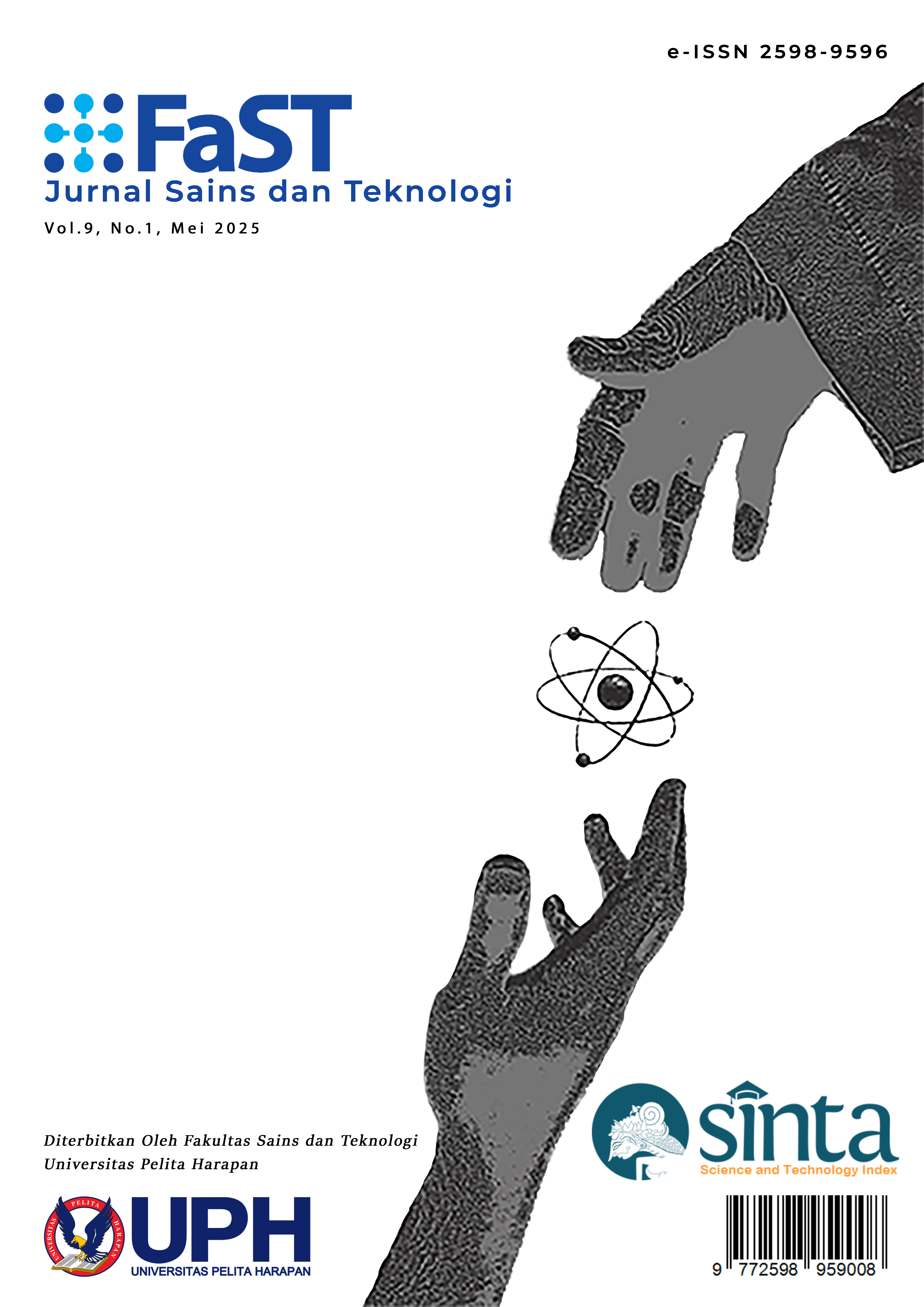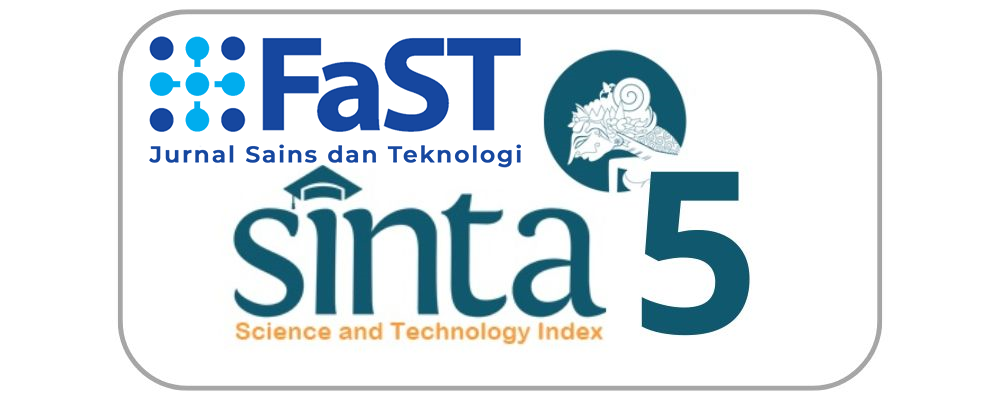Pemanfaatan Tepung Labu Kuning (Cucurbita Moschata Duchesne) sebagai Substituen Tepung Beras pada Pembuatan Baby Puff
[Utilization of Pumpkin Flour (Cucurbita Moschata Duchesne) as A Constituent of Rice Flour in Making Baby Puff]
DOI:
https://doi.org/10.19166/jstfast.v9i1.9609Keywords:
subtitution, sodium metabisulfite, pumpkin flour, baby puff, β-caroteneAbstract
Pumpkin was one of Indonesian agricultural product and known as a good source of carrotenoids such as β-carotene. β-carrotene was one of vitamin A precursor for human body and good for children’s growth. In this research, pumpkin flour made by two methods, by soaking in sodium metabisulfite solution 0,25% and with no treatment as control. This treatment can preserve β-carrotene value during heating process. The objective of this research were to determine the best method on producing pumpkin flour and to study its physical characteristic, β-carotene, dietary fiber, hardness, color and proximate analysis of chosen baby puff using pumpkin flour as its substitute. The result show that the best method of pumpkin flour was soaking in sodium metabisulfite solution 0,25%. The best pumpkin flour has characteristic 35,24µg/g of β-carotene, 4,62% dietary fiber, 66,7 ohue, 407,67% water holding capacity, and 0,63 gr/ml density. The best baby puff formulation based on physical, chemical analysis and organoleptic score was 5 % pumpkin flour subtitution. Its contain 24,6 µg/g of β-carotene, 5,12% of dietary fiber, 79,86 ohue and 493,00 g hardness. The highest amount of β-carotene was found in baby puff with 20% pumpkin flour subtitution
Bahasa Indonesia Abstract: Labu kuning merupakan hasil pertanian Indonesia yang dikenal sebagai sumber zat gizi berupa β-karoten. β-karoten adalah salah satu prekursor vitamin A bagi tubuh manusia dan baik untuk pertumbuhan anak. Pada penelitian ini, tepung labu kuning dibuat dengan dua metode, yaitu perlakuan perendaman dalam larutan natrium metabisulfit 0,25% dan tanpa perlakuan sebagai kontrol. Perlakuan ini dapat mempertahankan nilai β-karoten selama proses pemanasan. Tujuan penelitian ini adalah untuk menentukan metode terbaik yaitu perendaman pada pembuatan tepung labu kuning berdasarkan sifat fisik, β-karoten, dan analisis proksimat tepung labu kuning terpilih dilihat dari β-karoten, serat pangan, kekerasan dan warna tepung labu kuning dan menggunakan tepung labu kuning sebagai substitusi. Hasil penelitian menunjukkan bahwa metode pembuatan tepung labu kuning terbaik adalah perendaman dengan larutan natrium metabisulfit 0,25%. Tepung labu kuning terbaik mempunyai data analisis β-karoten 35,24µg/g, serat pangan 4,62%, daya ikat air 407,67%, dan berat jenis 0,63 gr/ml. Formulasi baby puff terbaik berdasarkan analisis fisik dan kimia serta skor organoleptik adalah subtitusi tepung labu kuning 5%. Kandungan β-karotennya 24,6 µg/g, serat pangan 5,12%, kekerasan 493,00 g. Kandungan β-karoten tertinggi terdapat pada baby puff dengan subtitusi tepung labu kuning 20%
References
Astawan, Made. 2008. “Khasiat Warna-Warni Makanan”. Gramedia Pustaka Utama, Jakarta
Dauqan, E., Sani, H.A., Abdullah, A. 2010. Vitamin E and Beta Carotene Composition in Four Different Vegetable Oils. American Journal of Applied Sciences 8(5). http://dx.doi.org/10.3844/ajassp.2011.407.412
Direktorat Jenderal Bina Kesehatan Masyarakat. 2010. “Rencana Aksi Pembinaan Gizi Masyarakat 2010-2014”. Kementerian Kesehatan Republik Indonesia, Jakarta.
FAO. 2001. Human Vitamin and Mineral Requirements. Rome: Food and Agriculture Organization.
Kementrian Kesehatan Republik Indonesia. 2016. Tersedia di: http://www.depkes.go.id/article/view/16032200004/menkes-gizi-baik-untuk-membangun-generasi-yang-tinggi-sehat-dan-berprestasi.html diakses pada 20 Juli 2016.
Layla, Noor. 2015. Pemanfaatan Tepung Kedelai Sebagai Bahan Subtitusi Sus Kering Tepung Mocaf Dengan Variasi Penambahan Jahe. Skripsi, Universitas Muhamadiyah Surakarta, Solo.
NPCS Board. 2012.”Handbook on Fruits, Vegetable & Food Processing with Canning & Preservation”, 3rd revised edition. Asia Pacific Business Press, Inc, New Delhi.
Purwanto, C.C. Dwi. I., Dimas R. 2013. Kajian Sifat Fisik dan Kimia Tepung Labu Kuning (Cucurbita maxima) Dengan Perlakuan Blanching dan Perendaman Natrium Metabisulfit (Na2S2O5). Jurnal Teknosains Pangan 2(2). Universitas Sebelas Maret, Solo. https://doi.org/10.20961/jtp.v2i2.4392
Signes-Pastor, Antonio J., Manus Carey, dan Andrew A. Meharg. 2014. “Inorganic Arsenic in Rice-based Products for Infants and Young Children.” Food Chemistry 191: 128-134. https://doi.org/10.1016/j.foodchem.2014.11.078
Suprapti, Lies. 2005. Awetan Kering dan Dodol Waluh. Kanisius. Yogyakarta.
Wardhani, D.H., Yuliana, A.E., Dewi A.S. 2016. Natrium Metabisulfit sebagai Anti-Browning Agent pada Pencoklatan Enzimatik Rebung Ori (Bambusa Arundinacea). Jurnal Aplikasi Teknologi Pangan 5(4). Universitas Diponegoro, Semarang. https://doi.org/10.17728/jatp.202.140
Downloads
Published
Issue
Section
License
Copyright (c) 2025 Dr. Ir. Melanie Cornelia, MT, Heidi Maulani

This work is licensed under a Creative Commons Attribution-ShareAlike 4.0 International License.
“Authors who publish with this journal agree to the following terms:
1) Authors retain copyright and grant the journal right of first publication with the work simultaneously licensed under a Creative Commons Attribution License (CC-BY-SA 4.0) that allows others to share the work with an acknowledgement of the work's authorship and initial publication in this journal.
2) Authors are able to enter into separate, additional contractual arrangements for the non-exclusive distribution of the journal's published version of the work (e.g., post it to an institutional repository or publish it in a book), with an acknowledgement of its initial publication in this journal.
3) Authors are permitted and encouraged to post their work online (e.g., in institutional repositories or on their website). The final published PDF should be used and bibliographic details that credit the publication in this journal should be included.”



